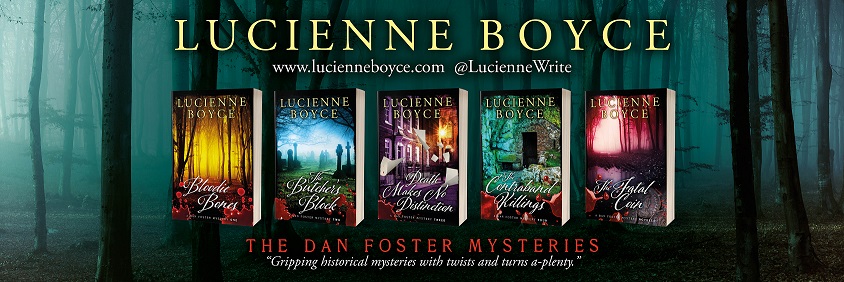Every writer knows they run the risk of receiving a bad review. Often the temptation to answer back is strong. The accepted advice is “don’t”, and I think this is wise counsel. Of course it’s hard when reviews seem harsh or unfair, but perhaps there’s some comfort in the realisation that it was ever thus. Spare a thought for the eighteenth and nineteenth-century writers who elicited the following responses from the critics.
The third number of the Edinburgh Review wrote of Madame de Stael’s 1802 novel Delphine, “this dismal trash has nearly dislocated the jaws of every critic amongst us with gaping...as dull as it could have been...The incidents are vulgar; the characters vulgar too.”
Thomas Holcroft’s play The Man of Ten Thousand was described as “miserable trash” in the True Briton on 3 February 1793. The Sun (no, not that one) on 27 January 1796 said it was “too low for comedy...gross and indecorous”, and reported that the audience reacted to the news that there would be a repeat performance with “symptoms of disgust”.
The accusation that a play or book was “low” was levelled at many writers. In She Stoops to Conquer, Goldsmith mocked the prim critics. In a decidedly low tavern scene complete with tobacco, punch and “several shabby fellows”, Tony Lumpkin has just sung an ode to the alehouse and his drinking friends comment:-
“Second Fellow: I love to hear him sing, bekeays he never gives us nothing that’s low.
Third Fellow: Oh damn anything that’s low, I cannot bear it.”
Oliver Goldsmith endured his fair share of critical venom, much of it from reviewer and satirist William Kenrick whose cruel epithet on Goldsmith describes him as a “A blundering artless suicide”. (Goldsmith died in 1774 after contracting a kidney infection, but rumours circulated about an alleged suicide.) You get the feeling that Kenrick would have loved the anonymity of the internet as many of his “reviews” consist of personal attacks on more successful authors which include accusations of plagiarism, dishonesty and lewdness. His envious remarks were prompted by “brandy, malice, pertness and conceit” according to poet Cuthbert Shaw.
A long forgotten “operatical absurdity called...Egyptian Festival” provoked from The Times on 15 March 1800 a tirade against “that class and species of writers...that...corrupt and degrade the British Theatre”. The reviewer continued, “Were half this encouragement bestowed on real talents, and half this expense awarded to legitimate compositions, we should at least have candidates for Dramatic Fame, amongst men of genius and education, who (with very few exceptions) seem to have abandoned this career of literature in despair, or from the shame of contending with the ridiculous pathos and deplorable buffoonery of the modern stage!”
Some inventive critics put their comments in verse form. Here’s an extract from “To the Author of The Monk”, a 1796 gothic novel by Matthew Lewis. The verses were published in the Morning Post and Fashionable World on 4 April 1797:-
“A Novel, now, says Will, is nothing more
Than an old castle, – and a creaking door –
A distant hovel –
Clanking of chains – a gallery – a light –
Old armour – and a phantom all in white –
And there’s a novel.”
A subsequent verse suggests that young ladies caught reading such novels should be flogged, and the whole ends by characterising gothic novels as “weak farrago” and “Mere trash – and very childish stuff”.
The “most popular novelist of the day”, Charles Dickens, was accused by the Derby Mercury on 27 October 1858 of “a breach of good taste” for reading a story of “stereotyped vulgarity of ‘boots’ and chambermaids” at the Derby Lecture Hall. Another story about three nurses also got the thumbs down: it was coarse and should not have been read before an audience of “both sexes”. The reviewer was of the opinion that “no cultivated unmarried woman” would read the story in private “without disgust”.
All in all, I think we can agree that harsh critics have always been with us. Many writers have survived the critical mauling and are still in print today – Dickens, of course; Lewis’s The Monk; and She Stoops to Conquer, which has appeared in 300 editions since 1773 and played in the West End once every three years. Some didn’t make it though. What became of Egyptian Festival and The Man of Ten Thousand? Perhaps they were as weak as the critics said!
In December 2013 I took part in a blog hop organised by writer Helen Hollick. Helen wrote a piece on Bad Reviews in which she quoted some hilarious present-day examples, amongst them the never-to-be-forgotten one star review, “I bought this book but didn’t have time to read it.” You can read some more of Helen’s examples at her blog, Let us Talk of Many Things.

Such an interesting and informative article. Thank you, Lucienne. I certainly agree with the "don't respond" advice - but, boy is that hard!
ReplyDeleteThanks, Helen. I agree it is hard - but dignified silence is best!
DeleteHear, Hear, Lucienne! Thanks for expressing the thoughts of many of us as we struggle to keep the balance between heeding legitimate advice and discarding the rubbish.
ReplyDeleteThanks Kathryn, glad you enjoyed the blog. I agree it is often very hard to distinguish good advice from bad.
Delete